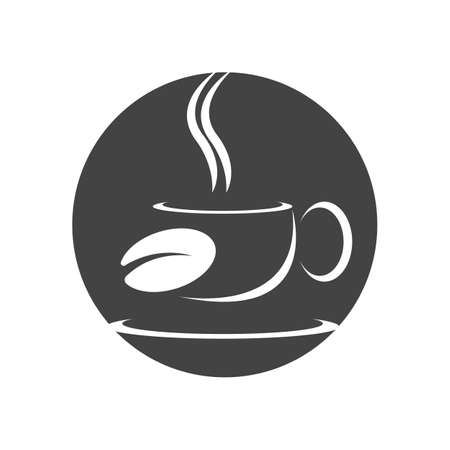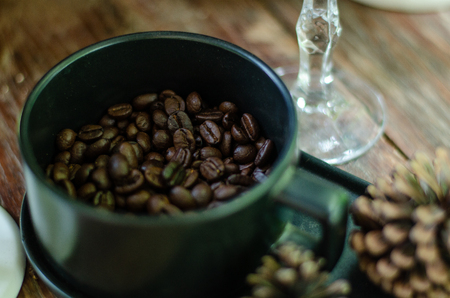Setting Up Your Cupping Space at Home
For home baristas across the UK, creating the right environment for coffee cupping is just as important as sourcing quality single-origin beans. Most British homes have compact kitchens or shared living spaces, so efficiency and tidiness are key. Start by clearing a worktop or dining table, making sure it’s free from crumbs, cooking smells, or any lingering aromas that could interfere with your tasting. Wipe down surfaces thoroughly, using fragrance-free cleaners to avoid unwanted scents. Gather your cupping essentials: freshly roasted single-origin coffee, a burr grinder, digital scales (preferably in grams), a kettle with precise temperature control, cupping bowls or sturdy mugs, spoons (ideally deep-bowled), and a timer. Dedicate an area for used spoons and rinsing water to keep things organised—this is especially helpful if you’re sharing space with family or flatmates. Good lighting is crucial; natural daylight is ideal but a bright kitchen lamp will do in darker months. If possible, open a window to allow fresh air in, which helps neutralise strong household odours common in UK flats and terraces. Lastly, set out notepads or tasting sheets for jotting down impressions—this methodical approach not only keeps your session structured but also encourages mindful tasting, turning your kitchen into a mini coffee lab.
Choosing and Sourcing Single-Origin Beans
Before diving into the hands-on cupping process, it’s essential to start with thoughtfully chosen beans. In the UK, the specialty coffee scene has flourished over recent years, meaning home baristas have access to a wide array of single-origin coffees from ethical and traceable sources. Here’s how you can select and source quality beans that do justice to your cupping session.
Tips for Selecting Quality Single-Origin Coffee
- Traceability: Opt for beans where the origin is clearly stated—look for information down to the specific farm or cooperative. Many UK roasters are transparent about their sourcing and will provide detailed information about region, altitude, and processing method.
- Freshness: Check roast dates rather than best-before dates. Aim for beans roasted within the past two to four weeks for optimal flavour development in your cupping session.
- Roaster Reputation: Support local UK roasters who prioritise direct trade or fair trade relationships. Notable names include Workshop Coffee (London), North Star (Leeds), Origin Coffee (Cornwall), and Clifton Coffee Roasters (Bristol).
- Sustainability: Ask about environmental credentials—such as Rainforest Alliance or organic certification—which are increasingly common among quality-focused UK roasters.
Understanding Tasting Notes Common in UK-Sourced Single-Origin Coffees
The UK palate tends to favour nuanced, balanced profiles with an emphasis on clarity of origin characteristics. Familiarising yourself with regional tasting notes will help you better appreciate what you’re cupping.
| Origin | Common Flavour Notes | UK Roaster Example |
|---|---|---|
| Ethiopia | Bergamot, jasmine, stone fruit, lemon zest | Pact Coffee, Assembly Coffee |
| Colombia | Citrus, red apple, caramel, chocolate | North Star Coffee, Colonna Coffee |
| Kenya | Blackcurrant, tomato, grapefruit, floral tones | Kiss the Hippo, Square Mile Coffee |
| Guatemala | Cocoa, almond, orange, brown sugar | Origin Coffee Roasters, Clifton Coffee Roasters |
| Brazil | Nuts, milk chocolate, dried fruits, mild acidity | Coffee Collective UK, Dark Woods Coffee |
Sourcing Locally: A Practical Approach for UK Home Baristas
You don’t need to look far—many local cafes and independent shops across the UK stock beans from leading artisanal roasters. Farmers’ markets are also a goldmine for discovering new micro-roasteries with unique offerings. When in doubt, chat with your local barista or reach out directly to roasters; most are happy to recommend beans suited for cupping or even provide sample packs so you can compare origins side by side.

3. Essential Tools and Materials for Cupping
Cupping at home doesn’t require a professional setup, but having the right kit makes all the difference in getting reliable results. Here’s a practical guide to what you’ll need—and where to source each item across the UK.
Cupping Bowls or Glasses
Standard cupping bowls (around 200ml) are ideal, but sturdy glasses or even small soup bowls will suffice for home use. Look for heat-resistant options from kitchenware shops like John Lewis or Lakeland, or order dedicated cupping bowls from UK coffee specialists such as Hasbean or Pact Coffee.
Quality Grinder
A consistent grind is crucial for fair comparison. A burr grinder—manual or electric—ensures uniformity. Wilfa and Hario hand grinders are popular choices available through sites like Coffee Hit or Amazon UK.
Accurate Scale
Precision matters when weighing both coffee and water. Digital kitchen scales with 0.1g accuracy can be picked up from Argos, Currys, or directly from Barista & Co online.
Kettle (Ideally Gooseneck)
While any kettle will do, a gooseneck spout offers better pouring control—a boon for even extraction. Fellow Stagg and Brewista models are accessible via Workshop Coffee or other UK-based coffee retailers.
Cupping Spoons
Deep-bowled spoons help you slurp and taste properly. Any soup spoon will work in a pinch, but official cupping spoons can be ordered from Square Mile Coffee Roasters or Union Hand-Roasted.
Fresh Filtered Water
The foundation of any good brew, filtered water is recommended. Simple Brita jugs are widely available at Tesco and Sainsbury’s.
Timer
A phone timer works perfectly well for tracking brew time, but dedicated digital timers are available from most kitchen supply stores if you want something separate.
Where to Find Everything in the UK
Most essentials can be sourced locally: supermarkets for basic glassware and water filters; department stores for scales; and specialist coffee websites for more niche items like cupping spoons and burr grinders. Don’t overlook independent coffee shops—they often stock gear or can point you towards trusted local suppliers.
4. Brewing Protocols: Water, Ratios, and Temperature
Getting your brewing protocols right is crucial for a successful cupping session, especially when evaluating single-origin coffees at home in the UK. The quality of your water, the coffee-to-water ratio, and the temperature at which you brew all play pivotal roles in how each coffee’s characteristics present themselves.
Water Choices for UK Home Baristas
The UKs tap water varies greatly depending on location, with some regions experiencing hard water high in minerals and others enjoying softer profiles. For most home baristas, the choice comes down to:
| Water Type | Pros | Cons | UK Suitability |
|---|---|---|---|
| Tap Water | Convenient and affordable | Variable taste, possible chlorine or limescale issues | Best in areas with soft water; test for off-flavours first |
| Filtered Water (Brita or similar) | Removes impurities and reduces limescale | May not remove all minerals; filters need changing regularly | A solid choice for most UK households; improves consistency |
| Bottled Water (Low mineral) | Consistent and neutral flavour profile | More expensive and less sustainable | Good for special sessions or if tap/filtered options are poor |
Coffee-to-Water Ratios
A precise coffee-to-water ratio ensures consistency across multiple cups during a cupping session. In line with specialty coffee standards and what’s practical at home in the UK, aim for 8.25g of freshly ground coffee per 150ml of water per cup. If you’re setting up several cups for comparative tasting, consider the following table:
| No. of Cups | Total Coffee (g) | Total Water (ml) |
|---|---|---|
| 1 Cup | 8.25g | 150ml |
| 3 Cups | 24.75g | 450ml |
| 5 Cups (typical flight) | 41.25g | 750ml |
Temperature Guidelines for UK Cupping Sessions
The ideal brewing temperature is between 92°C and 96°C. Most UK kettles boil above this range (100°C), so let your boiled water sit for about 60 seconds before pouring—this usually brings it down to a suitable temperature without needing a thermometer. Consistency is key: use the same method every time to reduce variables in your cupping results.
Summary Tips:
- If using tap water, run it cold and fresh from the mains to avoid staleness.
- If possible, filter your water to reduce limescale—especially important in hard-water regions like London or Birmingham.
- Aim for an 8.25g:150ml coffee-to-water ratio per cup.
- Brew at 92–96°C—let boiled water cool briefly before pouring over grounds.
Troubleshooting Common Issues:
- If your brews taste flat or overly bitter, check for excessive mineral content or chlorine in your water source.
- If flavours seem muted across different coffees, ensure you’re not using too much coffee or too little water.
This careful approach ensures that whether you’re brewing in Edinburgh or Exeter, your single-origin cupping experience will be as consistent and revealing as possible.
5. Tasting Process: Assessing Aroma and Flavour
Evaluating Fragrance: First Impressions Matter
Once your single-origin coffee samples have cooled slightly, it’s time to begin the core of the cupping method: assessing aroma and flavour. In British coffee circles, fragrance is often referred to as “nose” or “bouquet.” Using a clean spoon, gently break the crust on top of each cup by pushing the grounds away while leaning in to inhale deeply. Focus on identifying notes that are familiar within the UK context—think blackcurrant, malt loaf, hedgerow berries, or even subtle hints of floral English gardens. Jot down your initial impressions; don’t worry about being overly technical at this stage.
Slurping: Maximising Flavour Perception
Next, take a clean spoon and slurp the coffee with gusto. The aim here is to aerate the liquid as it enters your mouth—this helps distribute the coffee evenly over your palate and allows you to catch nuanced flavours. British palates may appreciate distinctions such as bright acidity reminiscent of Bramley apples, or comforting chocolatey undertones akin to a rich digestive biscuit. Take several sips from each sample, rinsing your spoon between cups to avoid cross-contamination.
Recording Notes: Be Precise but Approachable
As you move from cup to cup, write down your observations in clear language. Consider using tasting terms common among UK baristas: “clean,” “balanced,” “lively,” or “rounded.” Don’t hesitate to reference distinctly British foods or experiences—perhaps a hint of Earl Grey tea or treacle tart emerges in a particular brew. Use a simple scoring system if helpful (for example, rating acidity or sweetness out of five). The goal isn’t to impress with jargon but to create a practical record that will help you select coffees you genuinely enjoy.
Reflecting on Your Findings
After completing your tasting round, compare notes with any fellow home baristas present—or simply review your own thoughts. Which single-origin stood out? Was there a surprising depth to an Ethiopian Yirgacheffe or an unexpected smoothness in a Colombian? Remember, cupping is as much about personal discovery as it is about technical evaluation, so trust your taste buds and embrace what resonates with your unique British palate.
6. Keeping a Home Coffee Cupping Log
If you’re keen to deepen your understanding of single-origin coffees, maintaining a tasting journal is an invaluable habit. Many UK home baristas find that journaling not only sharpens their palate but also makes each brew more meaningful—a bit like keeping a record of your favourite pub ales or local cheeses.
Why Keep a Coffee Cupping Log?
A cupping log is much more than a list of coffees you’ve tried; it’s a structured way to capture your impressions and track your palate’s evolution. With the UK’s rich tradition of diary-keeping—from classic Moleskines to digital notebooks—there are plenty of formats to suit every style. Reflecting on previous entries, you’ll soon notice patterns in your preferences and an increased confidence when describing flavour notes.
Structuring Your Tasting Journal
Start simple: divide your page into sections for date, coffee origin, roaster, grind size, brewing method, and water temperature. Then add columns for aroma, acidity, body, aftertaste, and any distinctive flavour notes—think “blackcurrant” or “malty,” which resonate with the British palate. Don’t forget space for personal reflections; perhaps compare notes over a weekend breakfast or after a rainy afternoon walk.
Choosing Your Format
Whether you prefer an old-school notebook (a nod to the classic British field journal) or a spreadsheet on your laptop, consistency is key. Some UK baristas use bullet journals with custom symbols for quick reference; others opt for printable templates. There’s no right or wrong—just what feels sustainable and enjoyable for you.
Building the Habit
Like any new routine, start small and stay curious. Set aside a regular time—perhaps Sunday mornings—to cup and log new coffees. Invite friends or family to join in, turning the process into a social ritual reminiscent of British tea tastings or cheese boards. Over time, your cupping log will become both a practical resource and a cherished record of your coffee journey.
Embracing this structured yet creative approach not only elevates your home barista skills but also connects you to the wider UK coffee community—where sharing tasting notes is all part of the fun.


